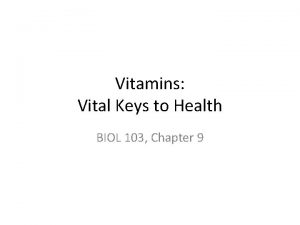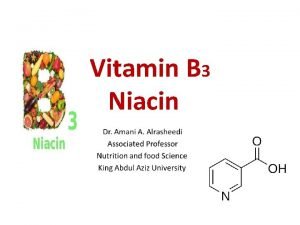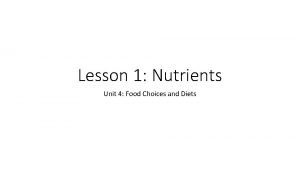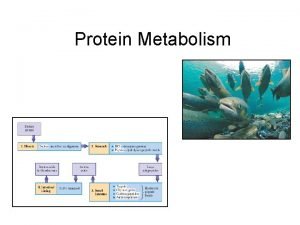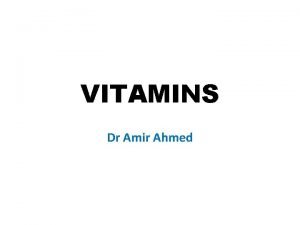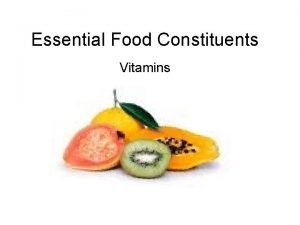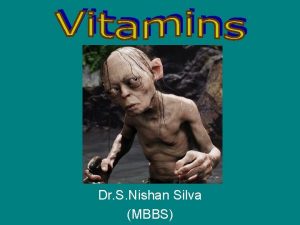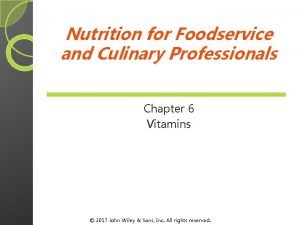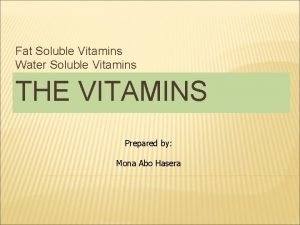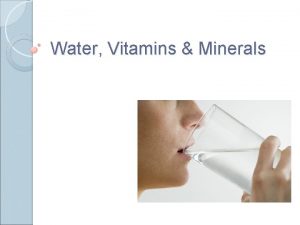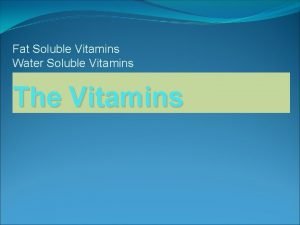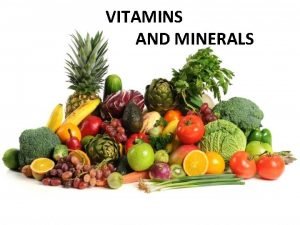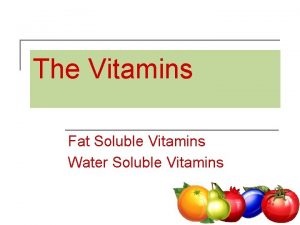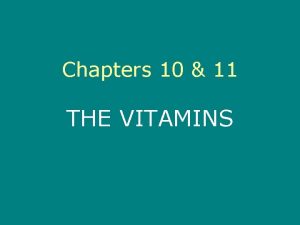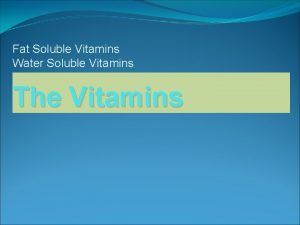Poultry Notes Nutrients in Poultry Protein Niacin Vitamins












- Slides: 12

Poultry Notes

Nutrients in Poultry… ¢ ¢ Protein Niacin, Vitamins B 6 and B 12, calcium, Phosphorus and Iron Relatively low in fat Most fat is under skin (removing skin takes away some fat) Light Meat – less exercise Leaner and milder flavor vs. Dark Meat - more exercise Contains more fat

Types: Chicken ¢ Turkey ¢ Duck ¢ Goose ¢ Poultry has a mild flavor!

Duck and Goose ¢ ¢ Usually young birds Best roasted because of fat level

Chicken “Most popular poultry in the U. S. ” The age of the bird determines the tenderness and the type of cooking method selected. Turkey

Forms of Poultry Parts Processing adds to cost l Halves, quarters, or parts l Bone in / Boneless Ground Poultry l Can substitute for ground beef Processed Poultry l Turkey bacon Convenience Forms l Frozen, precooked, deli meat l

Selecting Poultry ¢ Select poultry that: Has smooth soft skin l Is creamy white/yellow colored l ¢ Watch out for: Feathers l Bruising l Torn skin l Leaking l Smells l

Storing and Cooking ¢ ¢ ¢ Keep refrigerated to prevent bacteria growth Cook until well done (juice runs clear) Internal temperature of l l l ¢ 180 deg. – whole poultry, thighs, legs, wings 170 deg. – chicken & turkey breasts 165 deg. – stuffing and ground turkey Cooking methods: l Broil, Grill, Roast, Braise, Sauté, Stew, Barbequing

Moist Heat Cooking Methods Sautéing 1. • Cooking over direct heat using a small amount of fat Stewing 2. • Simmering over low heat in enough liquid to cover the meat Braising 3. • Cooking using a small amount of liquid over low heat in a tightly covered pan. This uses a smaller amount of liquid then with stewing.

Dry Heat Cooking Methods 1. Grilling • Cooking over a direct heat source on an electric, gas, or charcoal grill. 2. Broiling • Cook 4 inches under direct heat 3. Barbequing • Slowly cooking in an open pit or on a spit using coals or hardwoods and gas or electricity as a heat source. The food is also frequently based with a tomato or vinegar based sauce. 4. Roasting • Cooking in the oven in an uncovered pan, and without adding any liquid.

¢ Giblets – Edible poultry organs, liver gizzards, heart ¢ USDA – Grade and inspects poultry F A C T S ¢ Grade A – most commonly found in supermarkets ¢ Poultry should be used within 1– 2 days of it in the fridge! ¢ Salmonella – Food Borne Illness ¢ Cook to internal temperature of at least 165°

3 Card Match 1. 2. 3. 4. 5. 6. 7. 8. Fold three pieces of paper. Each paper should make 8 squares Use the seven cooking terms On one square write the term On the second square write the definition in YOUR own words On the third square draw a picture to represent the term. On the back of the card write in pencil write an answer key. (ex: all grilling cards are number 1) Cut the squares out. Mix the squares up. Trade with a partner and try to match the cards Switch three times, with people from a different kitchen. Have your three partners sign the extra squares. Staple everything together, write your name and circle it on the top card, and place on the counter.
 Water soluble vitamins vs fat soluble vitamins
Water soluble vitamins vs fat soluble vitamins Niacin absorption
Niacin absorption Which of the following is true about our food choices
Which of the following is true about our food choices Protein-protein docking
Protein-protein docking Protein pump vs protein channel
Protein pump vs protein channel Transdeamination of amino acids
Transdeamination of amino acids Protein modeling scioly
Protein modeling scioly Wisc
Wisc Primitiv vitamins
Primitiv vitamins Vitamins name
Vitamins name Importance of vitamins
Importance of vitamins تعريف الفيتامينات
تعريف الفيتامينات Categories of vitamins
Categories of vitamins
